-
History & Society
- Education in Pre-war Hong Kong
- History of Taikoo Sugar Refinery
- Hong Kong Products Exhibition
- Local Festivals Around the Year
- Post-war Industries
- Pre-war Industry
- The Hong Kong Jockey Club Archives
- Tin Hau Festival
- Memories We Share: Hong Kong in the 1960s and 1970s
- History in Miniature: The 150th Anniversary of Stamp Issuance in Hong Kong
- A Partnership with the People: KAAA and Post-war Agricultural Hong Kong
- The Oral Legacies (I) - Intangible Cultural Heritage of Hong Kong
- Hong Kong Currency
- Hong Kong, Benevolent City: Tung Wah and the Growth of Chinese Communities
- The Oral Legacies Series II: the Representative List of the Intangible Cultural Heritage of Hong Kong
- Braving the Storm: Hong Kong under Japanese Occupation
- A Century of Fashion: Hong Kong Cheongsam Story
Geography & EnvironmentArt & Culture- Calendar Posters of Kwan Wai-nung
- Festival of Hong Kong
- Ho Sau: Poetic Photography of Daily Life
- Hong Kong Cemetery
- Sketches by Kong Kai-ming
- The Culture of Bamboo Scaffolding
- The Legend of Silk and Wood: A Hong Kong Qin Story
- Journeys of Leung Ping Kwan
- From Soya Bean Milk To Pu'er Tea
- Applauding Hong Kong Pop Legend: Roman Tam
- 他 FASHION 傳奇 EDDIE LAU 她 IMAGE 百變 劉培基
- A Eulogy of Hong Kong Landscape in Painting: The Art of Huang Bore
- Imprint of the Heart: Artistic Journey of Huang Xinbo
- Porcelain and Painting
- A Voice for the Ages, a Master of his Art – A Tribute to Lam Kar Sing
- Memories of Renowned Lyricist: Richard Lam Chun Keung's Manuscripts
- Seal Carving in Lingnan
- Literary Giant - Jin Yong and Louis Cha
Communication & Media- Hong Kong Historical Postcards
- Shaw Brothers’ Movies
- Transcending Space and Time – Early Cinematic Experience of Hong Kong
- Remembrance of the Avant-Garde: Archival Camera Collection
- Down Memory Lane: Movie Theatres of the Olden Days
- 90 Years of Public Service Broadcasting in Hong Kong
- Multifarious Arrays of Weaponry in Hong Kong Cinema
-
History & SocietyGeography & EnvironmentArt & Culture
-
View Oral History RecordsFeatured StoriesAbout Hong Kong Voices
-
Hong Kong Memory
Images
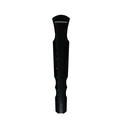
-
Dongxiao (1)
This qin, named Dongxiao, was made in Northern Song Dynasty (960-1127) and was acquired by Lee Chun-yuen, Otto. The photo shows the front of Dongxiao in Fuxi style.
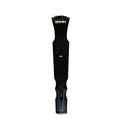
-
Dongxiao (2)
This qin, named Dongxiao, was made in Northern Song Dynasty (960-1127) and was acquired by Lee Chun-yuen, Otto. The photo shows the back of Dongxiao in Fuxi style.
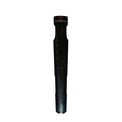
-
Qiushui (1)
This qin, named Qiushui, was made in Ming Dynasty (1368-1644) and was acquired by Ng Ying-wai in the 1990s. The photo shows the front of Qiushui in Zhongni style.
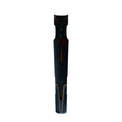
-
Qiushui (2)
This qin, named Qiushui, was made in Ming Dynasty (1368-1644) and was acquired by Ng Ying-wai in the 1990s. The photo shows the back of Qiushui in Zhongni style.
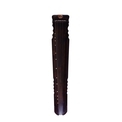
-
Langshiquan (1)
This qin is named Langshiquan and was acquired by Lee Chun-yuen, Otto. The photo shows the front of Langshiquan in Lianzhu style.
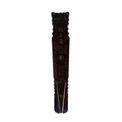
-
Langshiquan (2)
This qin is named Langshiquan and was acquired by Lee Chun-yuen, Otto. The photo shows the back of Langshiquan in Lianzhu style.
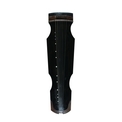
-
Reformed Qin in Zhongni Style (1)
This qin is the product of the musical instrument reforms carried out in mainland China in the 1950s and 1960s. It bears the following characteristics:
1. The body is enlarged to increase amplitude of the sound.
2. In addition to the two feet, five wooden knobs have been added to the tail at the bottom. Since each foot or knob is tied to only one string, other strings will not be disturbed during replacement.
3. The traditional tuning pegs system is replaced by a metal tuning machine.
This qin was acquired by Lau Chor-wah. The photo shows the front of the reformed qin in Zhongni style.
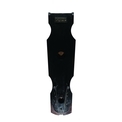
-
Reformed Qin in Zhongni Style (2)
This qin is the product of the musical instrument reforms carried out in mainland China in the 1950s and 1960s. It bears the following characteristics:
1. The body is enlarged to increase amplitude of the sound.
2. In addition to the two feet, five wooden knobs have been added to the tail at the bottom. Since each foot or knob is tied to only one string, other strings will not be disturbed during replacement.
3. The traditional tuning pegs system is replaced by a metal tuning machine.
This qin was acquired by Lau Chor-wah. The photo shows the back of the reformed qin in Zhongni style.
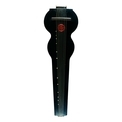
-
Reformed Qin in the Form of a Guitar (1)
This qin was made by the late Cheung Sai-bung, a music scholar in Hong Kong. It bears the following characteristics:
1. The body is enlarged to increase the amplitude of the sound and references a guitar design.
2. Unlike a traditional qin that features two sound holes on the bottom, the only sound hole existent in this case is on the top.
3. The traditional tuning peg system has been replaced by a guitar machine head.
4. The strings are attached to seven metal knobs on the tail, thus obviating the need to fix the strings on the feet.
5. There are three supporting feet on the bottom.
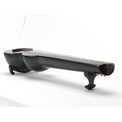
-
Reformed Qin in the Form of a Guitar (2)
This qin was made by the late Cheung Sai-bung, a music scholar in Hong Kong. It bears the following characteristics:
1. The body is enlarged to increase the amplitude of the sound and references a guitar design.
2. Unlike a traditional qin that features two sound holes on the bottom, the only sound hole existent in this case is on the top.
3. The traditional tuning peg system has been replaced by a guitar machine head.
4. The strings are attached to seven metal knobs on the tail, thus obviating the need to fix the strings on the feet.
5. There are three supporting feet on the bottom.
Copyright © 2012 Hong Kong Memory. All rights reserved.
| Set Name |





